The Amazing Gerenuk - Definition, Examples, Quiz, FAQ, Trivia
Meet Africa's long-necked "giraffe gazelle"!
What is a Gerenuk?
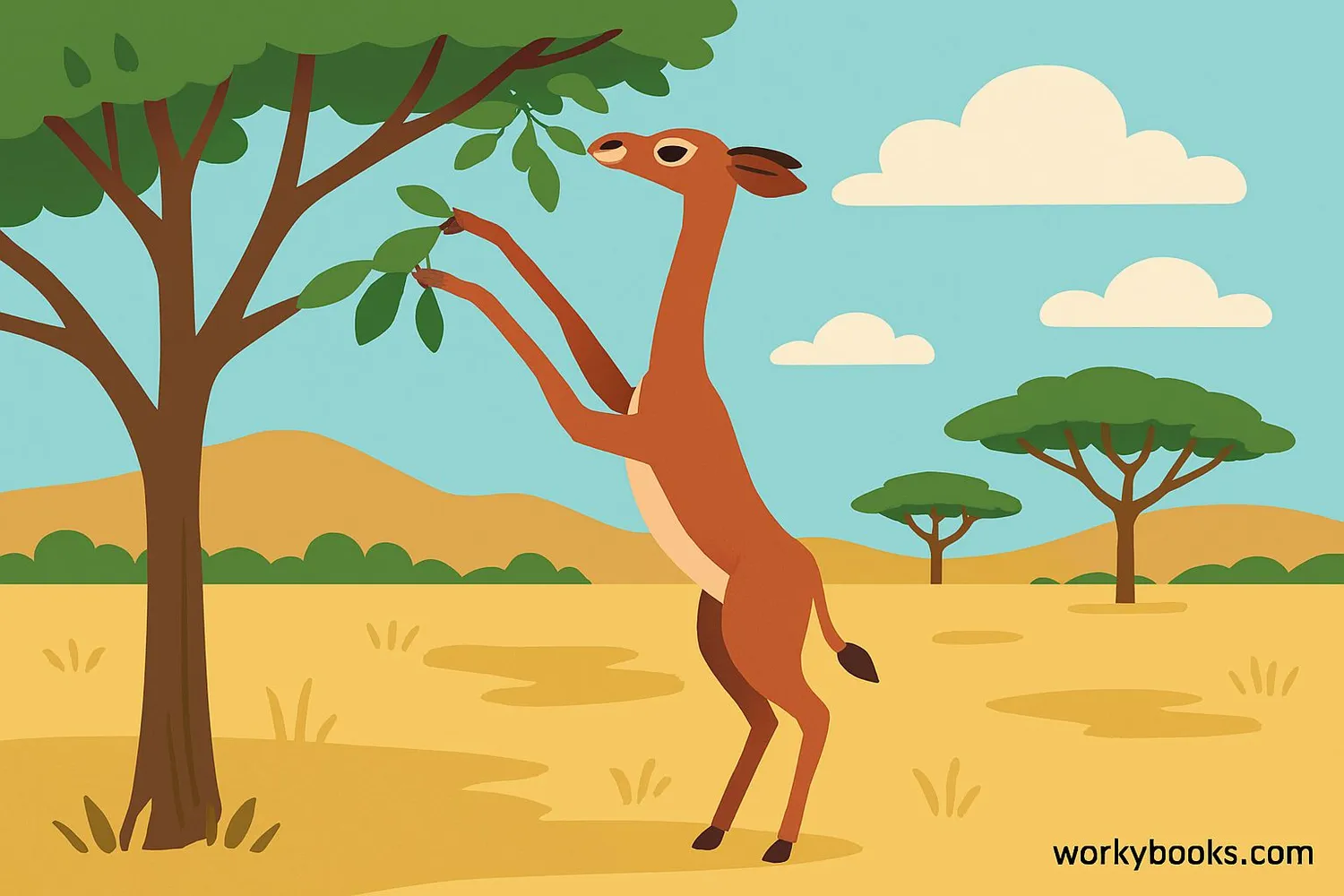
The gerenuk (pronounced "gair-eh-nook") is a special type of African antelope with an incredibly long neck! Its name means "giraffe-necked" in the Somali language. These fascinating animals are part of the gazelle family and are sometimes called "giraffe gazelles" because they can stand on their hind legs to reach high leaves - just like mini-giraffes!
Gerenuks live in the dry, scrubby areas of East Africa, including Kenya, Somalia, Ethiopia, and Tanzania. They're perfectly adapted to their environment and have some amazing features that make them unique in the animal kingdom.
Did You Know?
Gerenuks almost never drink water! They get all the moisture they need from the plants they eat.
Special Appearance
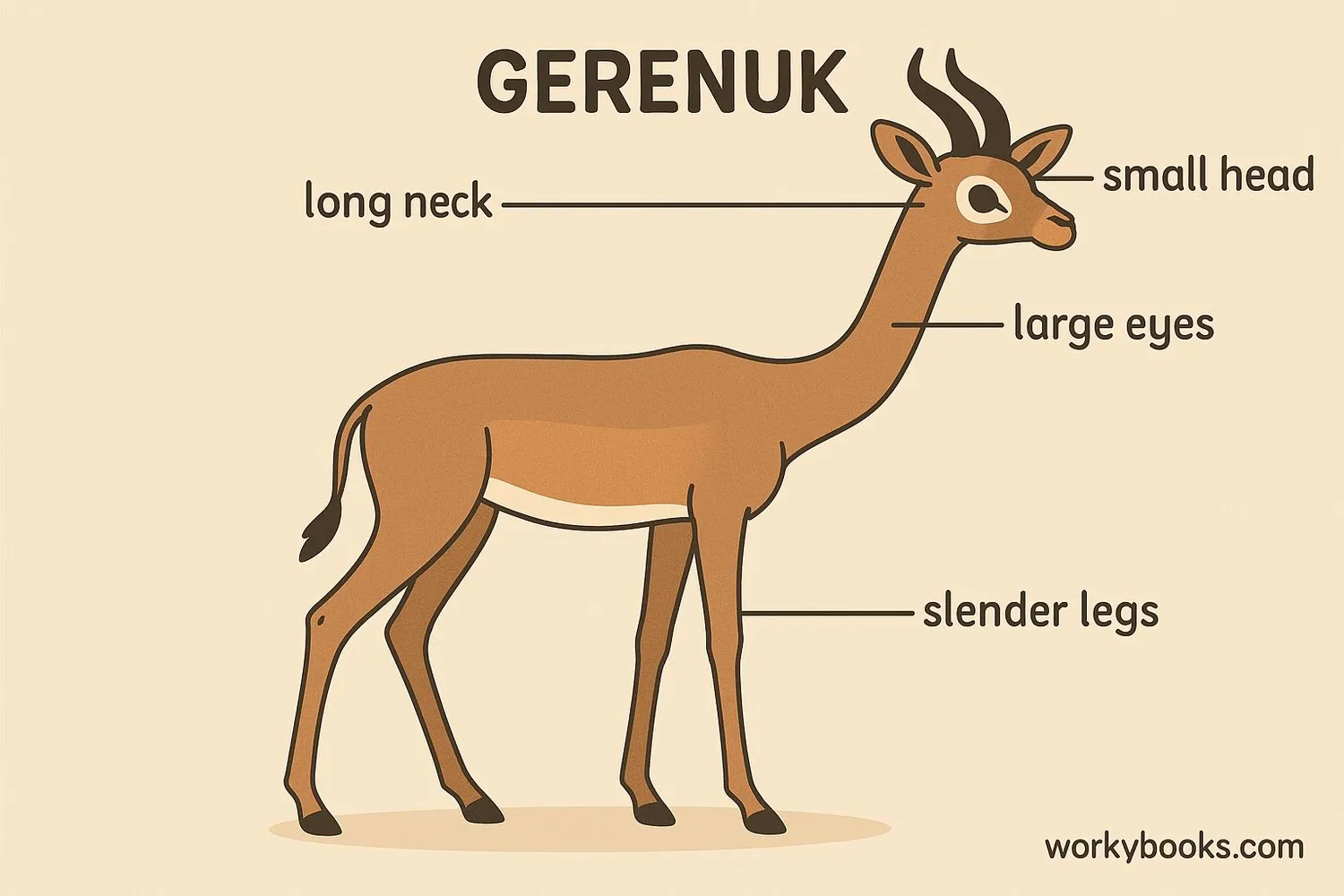
Gerenuks have several special features that make them stand out:
Long Neck
Their neck is 2-3 times longer than other gazelles, helping them reach high leaves
Large Eyes & Ears
Excellent vision and hearing to spot predators in open habitats
Slender Body
Lightweight body helps them move quickly through bushes
Horns
Only males have horns that curve slightly backward
Coat Color
Reddish-brown back with lighter sides and white belly
Adult gerenuks are about 3-3.5 feet tall at the shoulder and weigh between 65-110 pounds. Their long, slender legs help them move easily through thick bushes, and their special padded hooves are perfect for walking on dry, rocky ground.
Habitat & Behavior
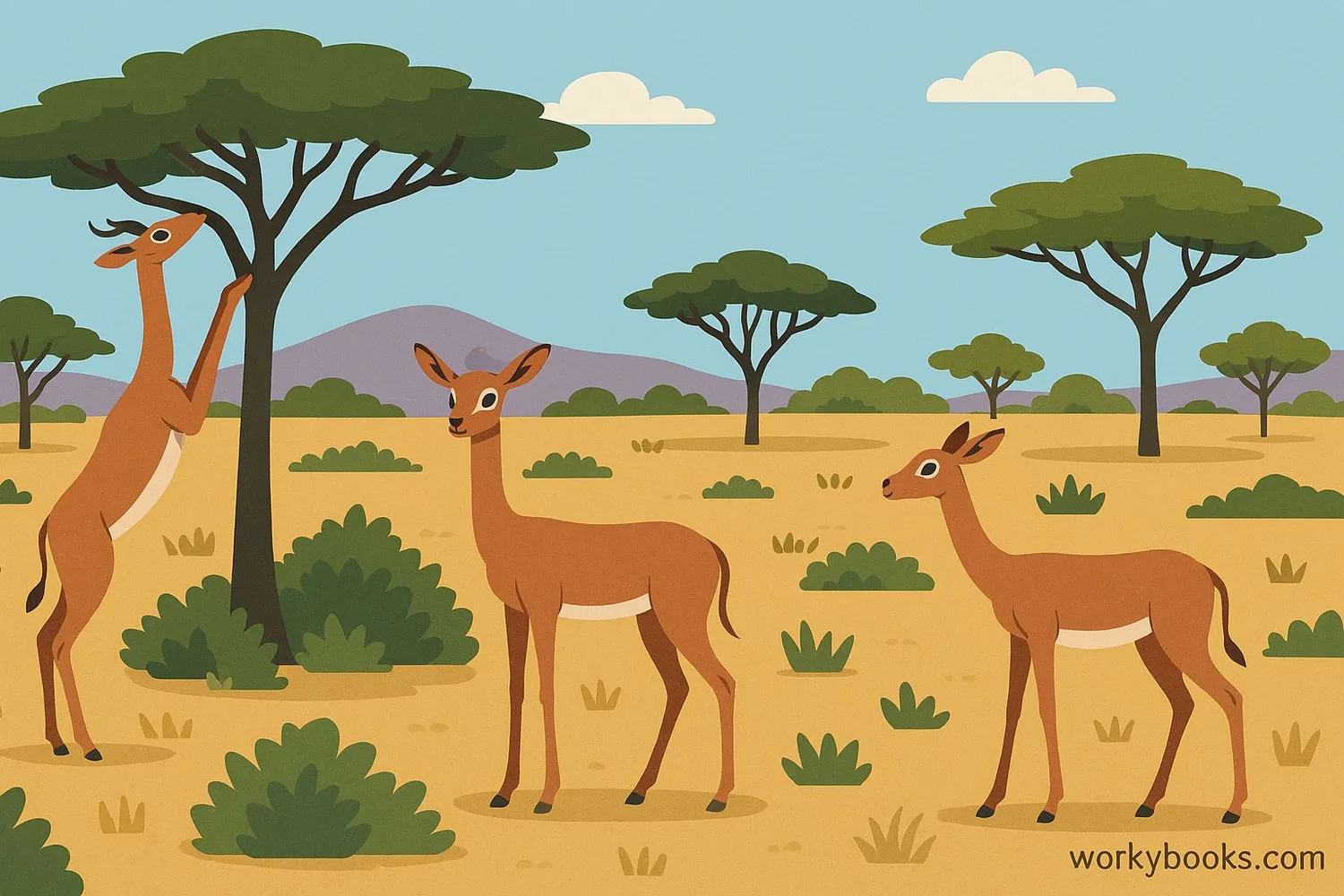
Gerenuks live in the dry, thorny bushlands and semi-deserts of East Africa. They prefer areas with lots of bushes and small trees where they can find food and hide from predators.
Here's what makes gerenuk behavior special:
Social Groups
Females live in small groups of 2-6, while males are usually solitary
Territorial Males
Males mark their territory with scent glands near their eyes
Alert System
When they spot danger, they freeze first, then run with a bouncing gait
Gerenuks are most active during the cooler parts of the day - early morning and late afternoon. During the hot midday, they rest in the shade of bushes. They have a special way of moving called "stotting" where they bounce on all four legs when alarmed, which may signal to predators that they're healthy and fast.
Diet & Amazing Adaptations
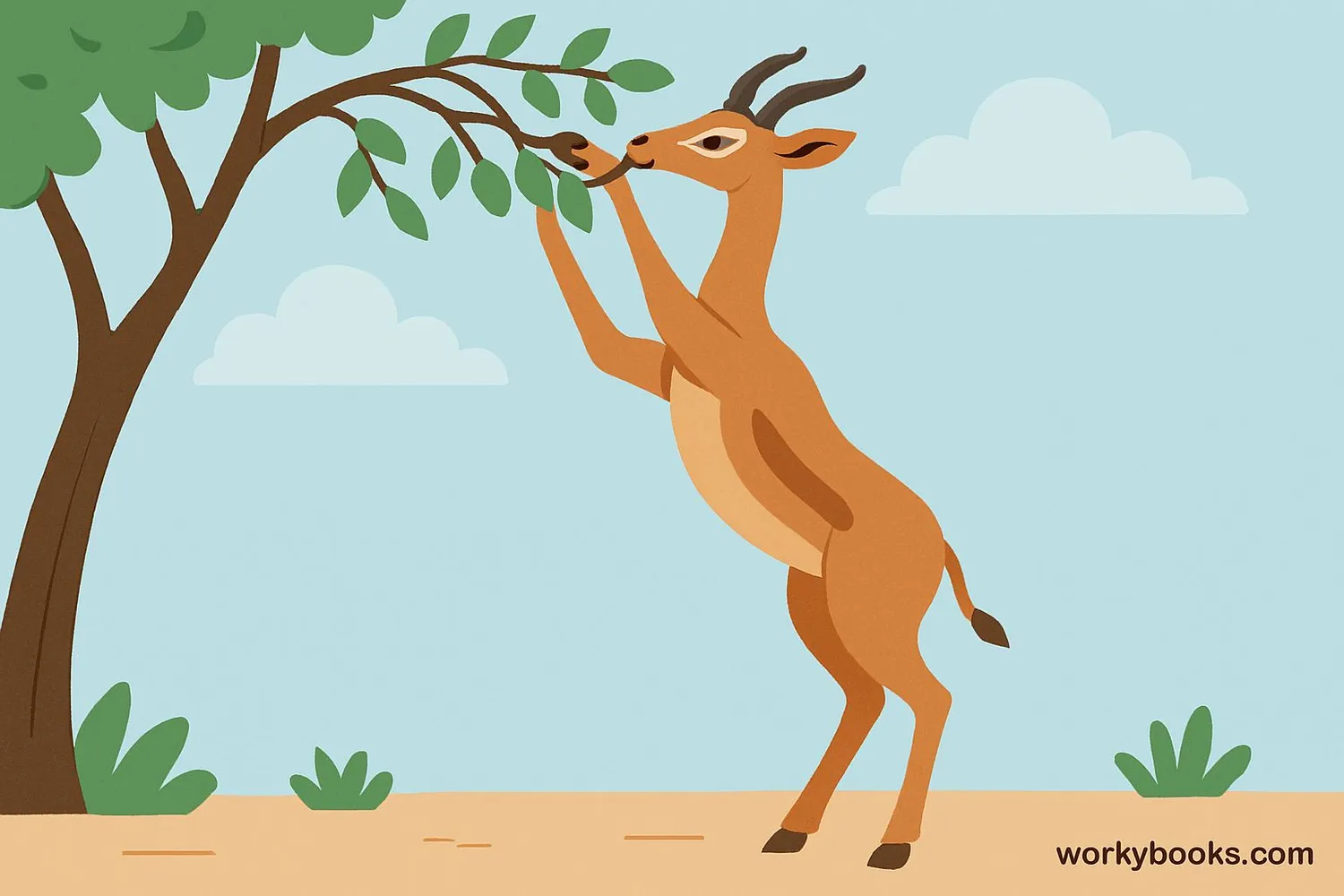
Gerenuks are herbivores, meaning they only eat plants. But they're not like other antelopes that graze on grass. They're browsers, which means they eat leaves, shoots, flowers, and fruits from bushes and trees.
Their special adaptations include:
Standing Tall
They can stand on hind legs to reach leaves 6-8 feet high
Branch Pulling
They use their front legs to pull branches down
Water-Free
They get all their water from plants they eat
Gerenuks are very picky eaters! They carefully select the most nutritious leaves and avoid plants with thorns or bad tastes. Their small, pointed mouth helps them pluck individual leaves, and they can go their entire lives without drinking water - getting all the moisture they need from their food.
Conservation Status
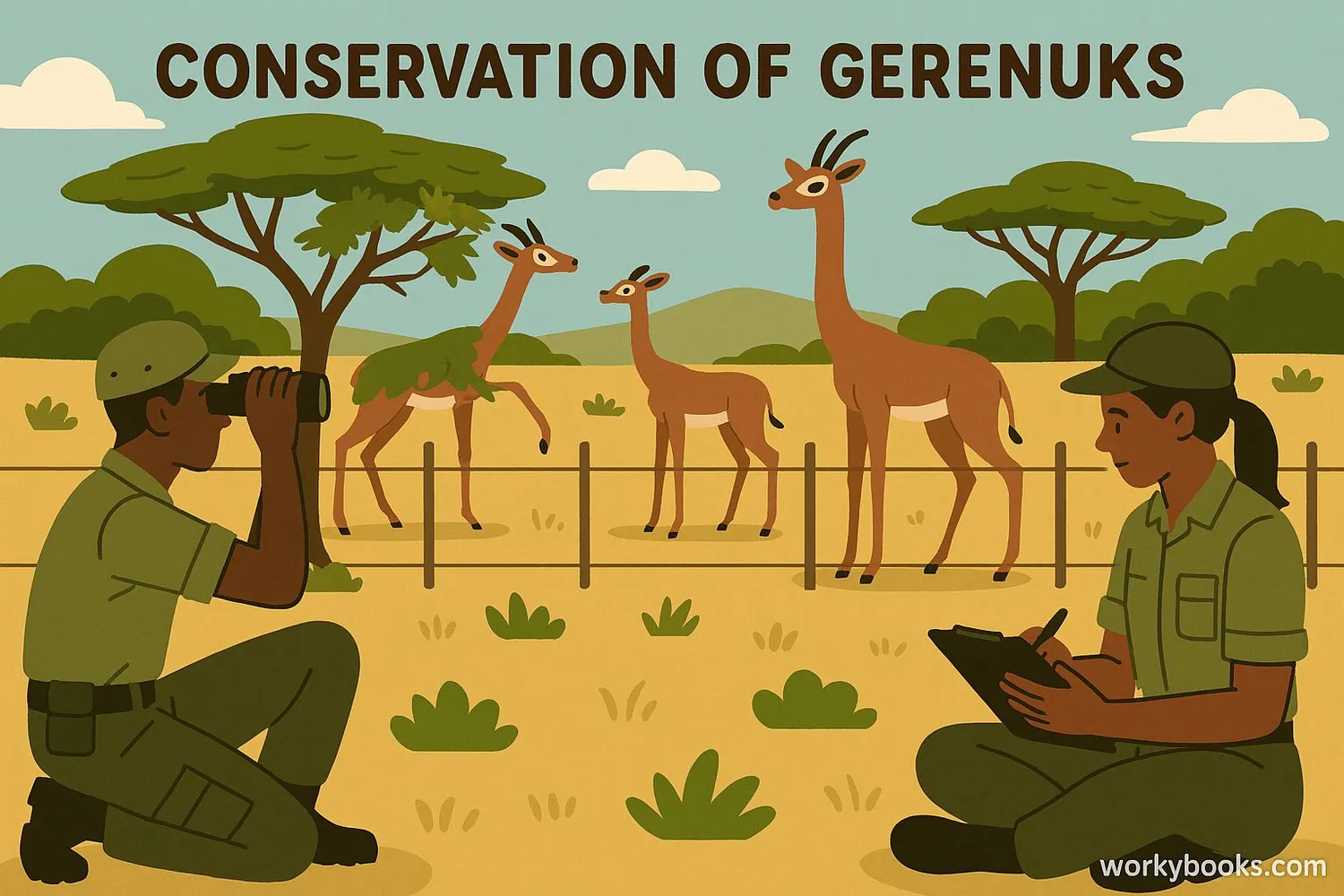
Gerenuks face several threats in the wild:
• Habitat loss: As people clear land for farming and settlements
• Hunting: Sometimes hunted for meat or trophies
• Predators: Lions, leopards, cheetahs, and hyenas
• Climate change: Making their dry habitats even drier
Currently, gerenuks are classified as "Near Threatened" on the IUCN Red List. Conservation organizations are working to protect their habitats and create wildlife corridors so gerenuks can move safely between areas.
How You Can Help
Support organizations that protect African wildlife habitats and learn more about sustainable practices that help conserve wildlife.
Gerenuk Quiz
Test your gerenuk knowledge with this fun quiz! Answer all 5 questions to see how much you've learned.
Frequently Asked Questions
Here are answers to some common questions about gerenuks:
Fun Gerenuk Trivia
Discover some amazing facts about gerenuks!
Neck Power
Gerenuks have 13 neck vertebrae - the same number as giraffes! Most mammals, including humans, have just 7 neck bones.
Water-Free Life
Gerenuks can survive their entire lives without drinking water! They get all the moisture they need from the plants they eat.
Super Senses
Gerenuks have excellent eyesight. They can spot predators from over 1,000 feet away! Their large ears also give them great hearing.
Many Names
Gerenuks are also called "giraffe gazelles" or by their scientific name Litocranius walleri. The Somali name "gerenuk" is the most popular.


